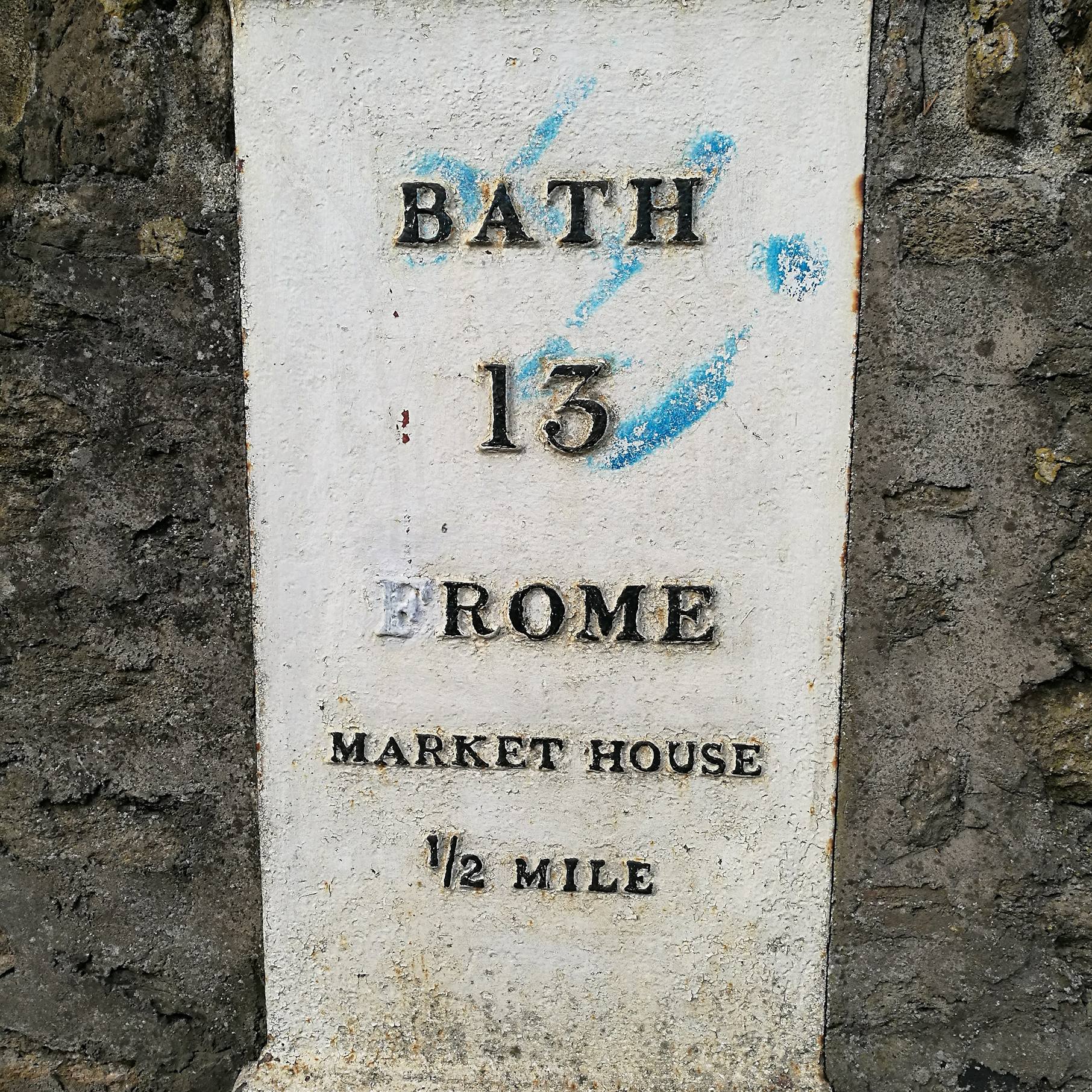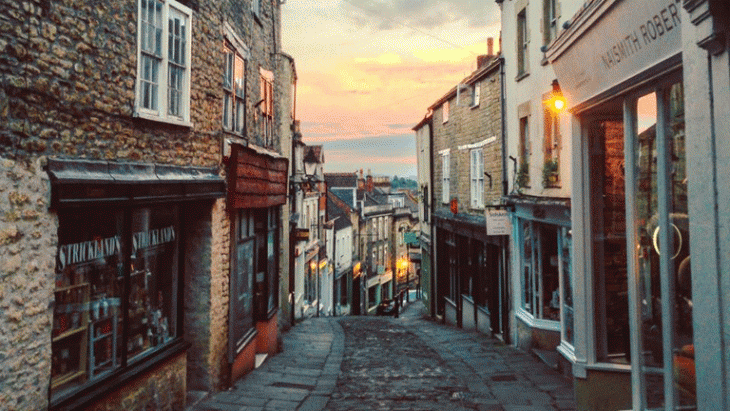Considering the confusion that surrounds the pronunciation of its very name, it’s hardly surprising to discover that the eccentric Somerset town of Frome (“froom”) is itself riddled with dichotomy. The name derives from the old English ‘ffraw’ – meaning “fair”. The word was originally used to describe the flow of the river that idles through the town. But it is a word fittingly open to interpretation.
Since the first millennium of the Common Era, the town has been under the watchful gaze of the White Horse that lies engraved in the chalk hills of the adjacent town of Westbury. As such, the Horse has been uniquely situated to witness Frome’s economic evolution.
One of the greatest hoards of Roman treasure ever found was unearthed here. The town’s proximity to the ancient city of Bath means the two places have a long history of being connected. The commute that continues today has been a long one indeed. There is a rather poignant instance of vandalism on an old Frome signpost that informs of the travelling distance to Bath. The letter ‘F’ has been painted over so as to spell the word ‘Rome’ instead. Or maybe they must meant ‘Bathroom’.
Historically financed by the wool trade, the advent of the Industrial Revolution saw the town of Frome embrace metal working and printing as alternatives. Although these industries have declined dramatically, printing and publishing remain heavily associated with the town and continue to be represented by local marketing company New Century Design.
The town bustles with both long-established commercial ventures such as New Century and The Garden Cafe, as well as many just burgeoning. The entrepreneurial mien of Frome makes it a perfect location for start-up businesses – especially those able to exploit the town’s bohemian ambience. The Independent Frome and Fabulous Frome projects have both achieved great success in encouraging inhabitants to invest locally.
As a result, whilst the town centre inevitably contains some of the ubiquitously-found conglomerates, there are nevertheless fewer than is typical in other, similarly-sized central business districts. The obligatory outskirts-of-town retail park is also extant. Though, unusually, the site also harbours the local police station.
Streets normally found monopolised by Tesco and their ilk are instead home to patrons of a more bespoke character. The town even boasts its own ‘cultural quarter’ – its locus being the craftperson’s paradise that is St. Catherine’s Hill (the divine prefix recently reinstated for marketing purposes). The street flaunts an arc of trade that is spread like a deck of cards – with each outlet offering something unique from its neighbour. There is very much a spirit of economic camaraderie amongst the retailers.
St. Catherine’s Hill is steep. Which makes the remarkable success of the street all the more impressive. Or perhaps the opportunities for a breather that the shop window curiosities provide are precisely the reason why it prospers. Indeed, should one wish to escape the centre of Frome, the surrounding steepness presents something of a hindrance – with the cobbled, particularly arduous incline of Gentle Street mischievously reveling in the absurdity of its misnomer.
The Gentle Street expedition remains worthwhile, however, what with its bragging exhibition of Listed Buildings – impressive to the extent that BBC period costume drama Poldark film scenes there. Frome itself contains more Listed Buildings relative to its size than any other town in the country.
The town’s eclecticism was borne as a consequence of its direct transport links with London. It’s a place where Londoners commute to for breathing space. This London connection is also reflected in the fact that three quarters of the town’s population own their house – a figure twelve percent higher than the national average.
For the first Sunday of every month, Frome is handed over to its celebrated artisanal market. And for ten days every July, to its famous festival. It is due to reasons such as these that The Times claimed the place to be the ‘Sixth Coolest Town’ in the UK, and why it has been granted the accolade of ‘Top 3 Town 2016’ in the Urbanism Awards.
Locally-settled luminary Pee Wee Ellis – James Brown’s and Van Morrison’s saxophonist – holds frequent performances in his adopted hometown (sometimes alongside fellow famous Fromie, The Fun Lovin’ Criminals frontman Huey Morgan), in which he demonstrates his mastery of breathing to create beauty and joy. Yet this is but one aspect of Frome’s throbbing art scene. Contrary to the town’s general rebuttal of modernism, with the triumph of the town’s recent Comic-Con, it has now even established itself as the region’s Mecca for cosplay frivolity.
Frome is a contradiction. It inhales and it exhales.
The town breathes.

